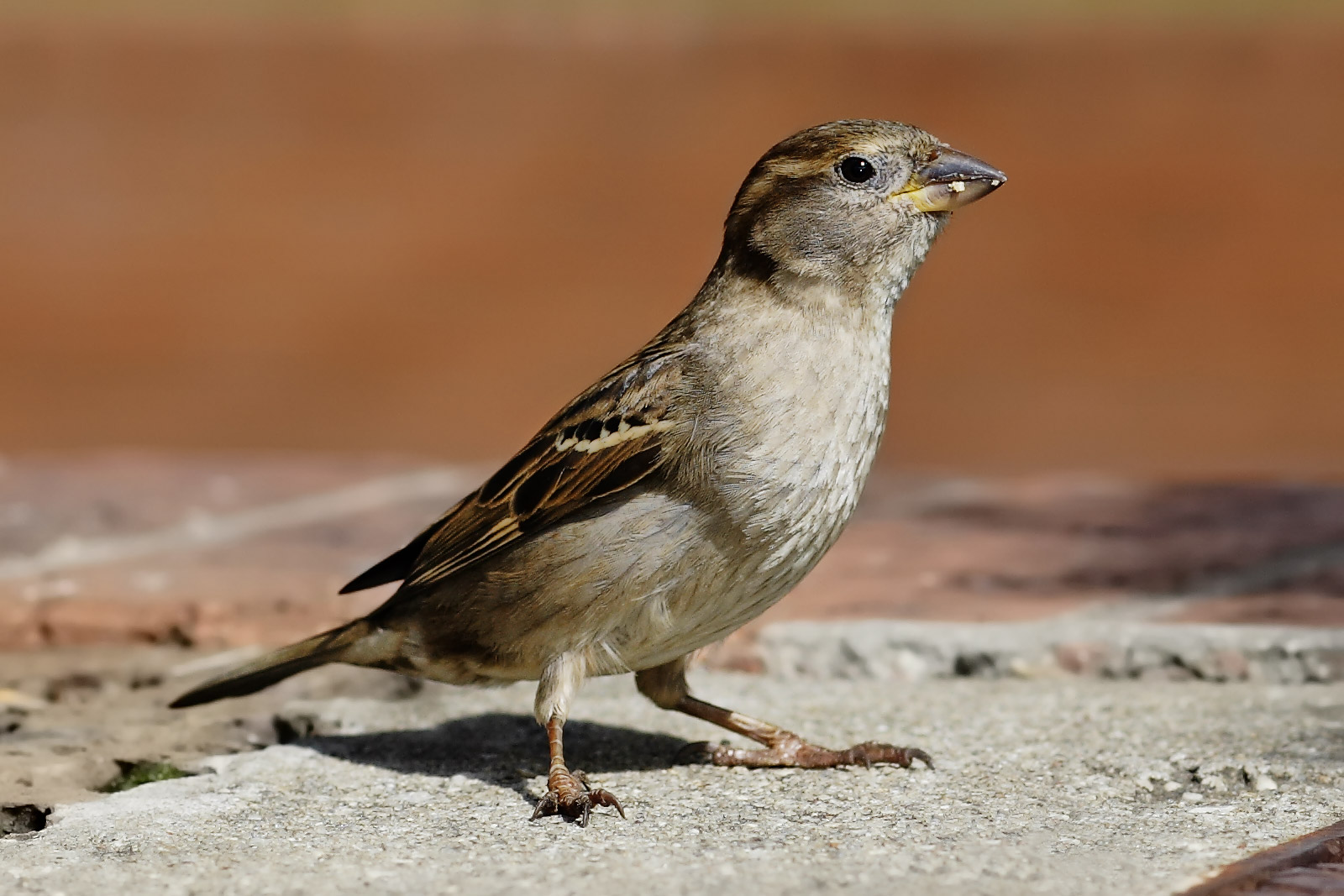|
Brown Bush Warbler
The brown bush warbler (''Locustella luteoventris'') is a songbird species. Formerly placed in the "Old World warbler" assemblage as ''Bradypterus luteoventrus'', it is now placed in the newly recognized family Locustellidae. It is found in Bangladesh, Bhutan, China, Hong Kong, India, Myanmar, Nepal, Thailand, and Vietnam. Its natural habitat is boreal forests during breeding and subtropical and tropical The tropics are the regions of Earth surrounding the equator, where the sun may shine directly overhead. This contrasts with the temperate or polar regions of Earth, where the Sun can never be directly overhead. This is because of Earth's ax ... forest in the winter quarters. References brown bush warbler Birds of Bhutan Birds of China Birds of Hong Kong Birds of Laos Birds of Myanmar Birds of Northeast India Birds of Yunnan brown bush warbler Taxa named by Brian Houghton Hodgson Taxonomy articles created by Polbot {{Locustellidae-stub ... [...More Info...] [...Related Items...] OR: [Wikipedia] [Google] [Baidu] |
Brian Houghton Hodgson
Brian Houghton Hodgson (1 February 1801 – 23 May 1894) was a pioneer natural history, naturalist and ethnologist working in India and Nepal where he was a British Resident (title), Resident. He described numerous species of birds and mammals from the Himalayas, and several birds were named after him by others such as Edward Blyth. He was a scholar of Newar Buddhism and wrote extensively on a range of topics relating to linguistics and religion. He was an opponent of the British proposal to introduce English as the official medium of instruction in Indian schools. Early life Hodgson was the second of seven children of Brian Hodgson (1766–1858) and his wife Catherine (1776–1851), and was born at Lower Beech, Prestbury, Cheshire. His father lost money in a bad bank investment and had to sell their home at Lower Beech. A great-aunt married to Beilby Porteus, the Bishop of London, helped them but the financial difficulties were great. Hodgson's father worked as a warden of the M ... [...More Info...] [...Related Items...] OR: [Wikipedia] [Google] [Baidu] |
Habitat
In ecology, habitat refers to the array of resources, biotic factors that are present in an area, such as to support the survival and reproduction of a particular species. A species' habitat can be seen as the physical manifestation of its ecological niche. Thus "habitat" is a species-specific term, fundamentally different from concepts such as Biophysical environment, environment or vegetation assemblages, for which the term "habitat-type" is more appropriate. The physical factors may include (for example): soil, moisture, range of temperature, and Luminous intensity, light intensity. Biotic index, Biotic factors include the availability of food and the presence or absence of Predation, predators. Every species has particular habitat requirements, habitat generalist species are able to thrive in a wide array of environmental conditions while habitat specialist species require a very limited set of factors to survive. The habitat of a species is not necessarily found in a ge ... [...More Info...] [...Related Items...] OR: [Wikipedia] [Google] [Baidu] |
Birds Described In 1845
Birds are a group of warm-blooded vertebrates constituting the class (biology), class Aves (), characterised by feathers, toothless beaked jaws, the Oviparity, laying of Eggshell, hard-shelled eggs, a high Metabolism, metabolic rate, a four-chambered heart, and a strong yet lightweight Bird skeleton, skeleton. Birds live worldwide and range in size from the bee hummingbird to the common ostrich. There are over 11,000 living species and they are split into 44 Order (biology), orders. More than half are passerine or "perching" birds. Birds have Bird wing, wings whose development varies according to species; the only known groups without wings are the extinct moa and elephant birds. Wings, which are modified forelimbs, gave birds the ability to fly, although further evolution has led to the Flightless bird, loss of flight in some birds, including ratites, penguins, and diverse endemism, endemic island species. The digestive and respiratory systems of birds are also uniquely a ... [...More Info...] [...Related Items...] OR: [Wikipedia] [Google] [Baidu] |
Birds Of Northeast India
Birds are a group of warm-blooded vertebrates constituting the class Aves (), characterised by feathers, toothless beaked jaws, the laying of hard-shelled eggs, a high metabolic rate, a four-chambered heart, and a strong yet lightweight skeleton. Birds live worldwide and range in size from the bee hummingbird to the common ostrich. There are over 11,000 living species and they are split into 44 orders. More than half are passerine or "perching" birds. Birds have wings whose development varies according to species; the only known groups without wings are the extinct moa and elephant birds. Wings, which are modified forelimbs, gave birds the ability to fly, although further evolution has led to the loss of flight in some birds, including ratites, penguins, and diverse endemic island species. The digestive and respiratory systems of birds are also uniquely adapted for flight. Some bird species of aquatic environments, particularly seabirds and some waterbirds, have furt ... [...More Info...] [...Related Items...] OR: [Wikipedia] [Google] [Baidu] |
Birds Of Laos
Birds are a group of warm-blooded vertebrates constituting the class (biology), class Aves (), characterised by feathers, toothless beaked jaws, the Oviparity, laying of Eggshell, hard-shelled eggs, a high Metabolism, metabolic rate, a four-chambered heart, and a strong yet lightweight Bird skeleton, skeleton. Birds live worldwide and range in size from the bee hummingbird to the common ostrich. There are over 11,000 living species and they are split into 44 Order (biology), orders. More than half are passerine or "perching" birds. Birds have Bird wing, wings whose development varies according to species; the only known groups without wings are the extinct moa and elephant birds. Wings, which are modified forelimbs, gave birds the ability to fly, although further evolution has led to the Flightless bird, loss of flight in some birds, including ratites, penguins, and diverse endemism, endemic island species. The digestive and respiratory systems of birds are also uniquely a ... [...More Info...] [...Related Items...] OR: [Wikipedia] [Google] [Baidu] |
Birds Of Hong Kong
Birds are a group of warm-blooded vertebrates constituting the class Aves (), characterised by feathers, toothless beaked jaws, the laying of hard-shelled eggs, a high metabolic rate, a four-chambered heart, and a strong yet lightweight skeleton. Birds live worldwide and range in size from the bee hummingbird to the common ostrich. There are over 11,000 living species and they are split into 44 orders. More than half are passerine or "perching" birds. Birds have wings whose development varies according to species; the only known groups without wings are the extinct moa and elephant birds. Wings, which are modified forelimbs, gave birds the ability to fly, although further evolution has led to the loss of flight in some birds, including ratites, penguins, and diverse endemic island species. The digestive and respiratory systems of birds are also uniquely adapted for flight. Some bird species of aquatic environments, particularly seabirds and some waterbirds, have further ... [...More Info...] [...Related Items...] OR: [Wikipedia] [Google] [Baidu] |
Birds Of China
Birds are a group of warm-blooded vertebrates constituting the class (biology), class Aves (), characterised by feathers, toothless beaked jaws, the Oviparity, laying of Eggshell, hard-shelled eggs, a high Metabolism, metabolic rate, a four-chambered heart, and a strong yet lightweight Bird skeleton, skeleton. Birds live worldwide and range in size from the bee hummingbird to the common ostrich. There are over 11,000 living species and they are split into 44 Order (biology), orders. More than half are passerine or "perching" birds. Birds have Bird wing, wings whose development varies according to species; the only known groups without wings are the extinct moa and elephant birds. Wings, which are modified forelimbs, gave birds the ability to fly, although further evolution has led to the Flightless bird, loss of flight in some birds, including ratites, penguins, and diverse endemism, endemic island species. The digestive and respiratory systems of birds are also uniquely a ... [...More Info...] [...Related Items...] OR: [Wikipedia] [Google] [Baidu] |
Birds Of Bhutan
Birds are a group of warm-blooded vertebrates constituting the class Aves (), characterised by feathers, toothless beaked jaws, the laying of hard-shelled eggs, a high metabolic rate, a four-chambered heart, and a strong yet lightweight skeleton. Birds live worldwide and range in size from the bee hummingbird to the common ostrich. There are over 11,000 living species and they are split into 44 orders. More than half are passerine or "perching" birds. Birds have wings whose development varies according to species; the only known groups without wings are the extinct moa and elephant birds. Wings, which are modified forelimbs, gave birds the ability to fly, although further evolution has led to the loss of flight in some birds, including ratites, penguins, and diverse endemic island species. The digestive and respiratory systems of birds are also uniquely adapted for flight. Some bird species of aquatic environments, particularly seabirds and some waterbirds, have fur ... [...More Info...] [...Related Items...] OR: [Wikipedia] [Google] [Baidu] |
Locustella
''Locustella'' is a genus of small passerine birds that include the grasshopper warblers. Formerly placed in the paraphyletic "Old World warbler" assemblage, they are now considered the northernmost representatives of a largely Gondwanan family, the Locustellidae. These are rather drab brownish "warblers" usually associated with fairly open grassland, shrubs or marshes. Some are streaked, others plain, all are difficult to view. They are insectivorous. The most characteristic feature of this group is that the song of several species is a mechanical insect-like reeling which gives rise to the group's scientific name. Species breeding in temperate regions are strongly bird migration, migratory. Taxonomy The genus ''Locustella'' was introduced by the German naturalist Johann Jakob Kaup in 1829 with the common grasshopper warbler (''Locustella naevia'') as the type species. The genus name ''Locustella'' is from Latin and is a diminutive of ''locusta'', "grasshopper". Like the En ... [...More Info...] [...Related Items...] OR: [Wikipedia] [Google] [Baidu] |
Tropical
The tropics are the regions of Earth surrounding the equator, where the sun may shine directly overhead. This contrasts with the temperate or polar regions of Earth, where the Sun can never be directly overhead. This is because of Earth's axial tilt; the width of the tropics (in latitude) is twice the tilt. The tropics are also referred to as the tropical zone and the torrid zone (see geographical zone). Due to the overhead sun, the tropics receive the most solar energy over the course of the year, and consequently have the highest temperatures on the planet. Even when not directly overhead, the sun is still close to overhead throughout the year, therefore the tropics also have the lowest seasonal variation on the planet; "winter" and "summer" lose their temperature contrast. Instead, seasons are more commonly divided by precipitation variations than by temperature variations. The tropics maintain wide diversity of local climates, such as rain forests, monsoons, sa ... [...More Info...] [...Related Items...] OR: [Wikipedia] [Google] [Baidu] |






